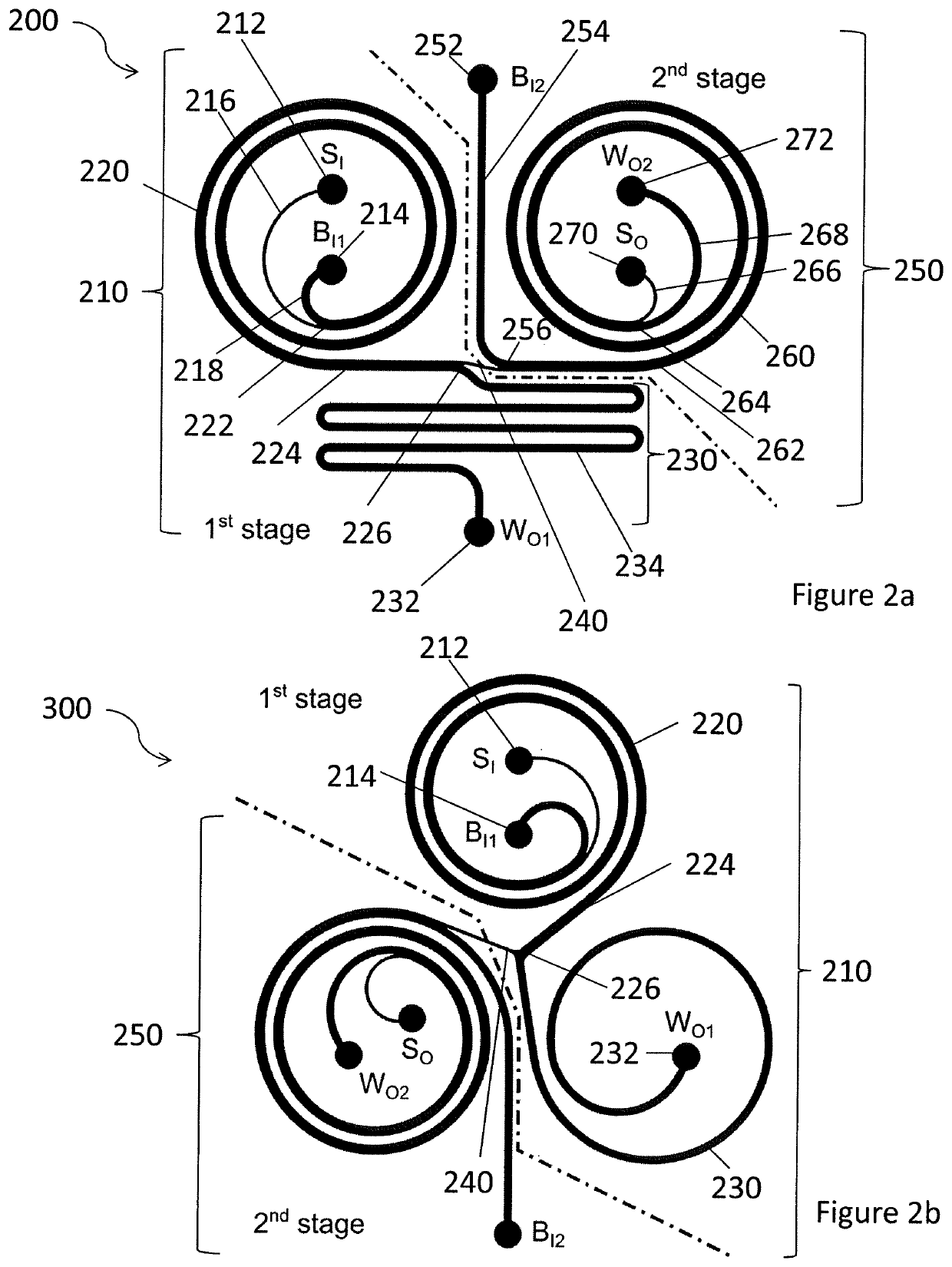Multi-stage target cell enrichment using a microfluidic device
a microfluidic device and target cell technology, applied in the field of microfluidic devices, can solve the problems of limiting downstream analysis, increasing the number of contamination of wbcs, and increasing the complexity of clinical samples, so as to achieve dramatic reduction of the number of cells entering the second stag
- Summary
- Abstract
- Description
- Claims
- Application Information
AI Technical Summary
Benefits of technology
Problems solved by technology
Method used
Image
Examples
Embodiment Construction
[0022]Embodiments of the present invention relate to microfluidic devices for isolating cells using sized based inertial separation in spiral microchannels. The microfluidic devices may be implemented as a microfluidic chip having a set of microchannels etched or moulded into a material such as glass, silicon or polymer such as Polydimethylsiloxane (PDMS).
[0023]Cells flowing in spiral microchannels are subjected to a combination of inertial lift forces along with the centrifugal acceleration induced Dean drag force. The inertial lift forces, which vary with the fourth power of the cell size, are responsible in focusing the cells at distinct multiple equilibrium positions within the microchannel cross-section. Adding a component of Dean drag, by designing spirally shaped microchannels, these multiple equilibrium positions can be reduced to just one near the inner microchannel wall. As the ratio of lift and Dean drag forces varies for varying cell sizes, the cells can be equilibrated ...
PUM
 Login to View More
Login to View More Abstract
Description
Claims
Application Information
 Login to View More
Login to View More - R&D
- Intellectual Property
- Life Sciences
- Materials
- Tech Scout
- Unparalleled Data Quality
- Higher Quality Content
- 60% Fewer Hallucinations
Browse by: Latest US Patents, China's latest patents, Technical Efficacy Thesaurus, Application Domain, Technology Topic, Popular Technical Reports.
© 2025 PatSnap. All rights reserved.Legal|Privacy policy|Modern Slavery Act Transparency Statement|Sitemap|About US| Contact US: help@patsnap.com



